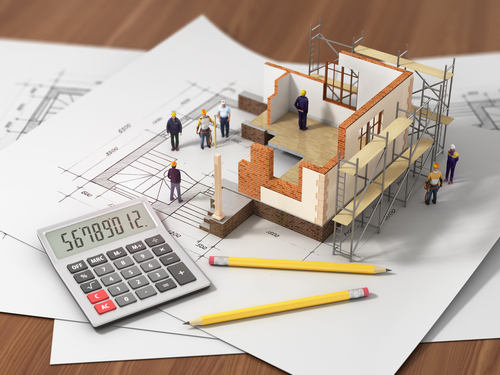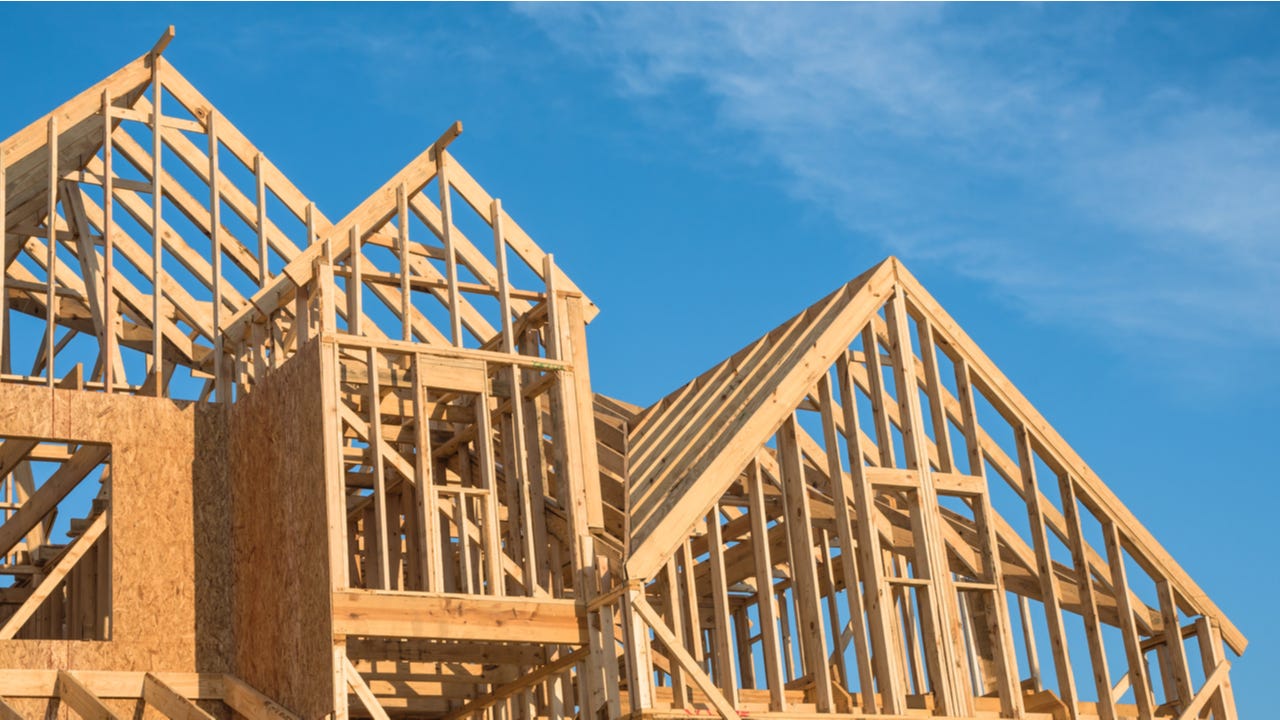
How We Make Money
The businesses whose offers you see on this website pay us. Unless our mortgage, home equity, and other home lending products are specifically prohibited by law, this compensation may have an impact on how and where products appear on this website, including, for example, the order in which they may appear within the listing categories. However, this payment has no bearing on the content we post or the user reviews you see here. We don’t include the range of businesses or loan options that you might have.

Our goal at Bankrate is to assist you in making more informed financial decisions. Although we follow stringent guidelines, this post might mention goods from our partners. Heres an explanation for . Bankrate logo.
Bankrate was established in 1976 and has a long history of assisting consumers in making wise financial decisions. We’ve upheld this reputation for more than 40 years by assisting people in making sense of the financial decision-making process and providing them with confidence regarding their next course of action.
You can rely on Bankrate to prioritize your interests because we adhere to a rigorous editorial policy. All of the content we publish is objective, accurate, and reliable because it is written by highly qualified professionals and edited by subject matter experts.
In order to give you peace of mind when making decisions as a buyer and homeowner, our mortgage reporters and editors concentrate on the topics that matter most to consumers: the newest rates, the greatest lenders, navigating the homebuying process, refinancing your mortgage, and more. Bankrate logo.
You can rely on Bankrate to prioritize your interests because we adhere to a rigorous editorial policy. Our team of distinguished editors and reporters produces truthful and precise content to assist you in making wise financial decisions.
We value your trust. Our goal is to give readers reliable, unbiased information, and we have established editorial standards to make sure that happens. Our reporters and editors carefully verify the accuracy of the editorial content they produce, making sure you’re reading true information. We keep our editorial staff and advertisers apart with a firewall. No direct payment from our advertisers is given to our editorial staff.
The editorial staff at Bankrate writes for YOU, the reader. Providing you with the best guidance possible to enable you to make wise personal finance decisions is our aim. We adhere to stringent policies to guarantee that advertisers have no influence over our editorial content. Advertisers don’t pay our editorial staff directly, and we carefully fact-check all of our content to guarantee accuracy. Thus, you can be sure that the information you’re reading, whether it’s an article or a review, is reliable and reputable. Bankrate logo.
How we make money
You have money questions. Bankrate has answers. For more than 40 years, our professionals have assisted you in managing your finances. We always work to give customers the professional guidance and resources they need to be successful on their financial journey.
Because Bankrate adheres to strict editorial standards, you can rely on our content to be truthful and accurate. Our team of distinguished editors and reporters produces truthful and precise content to assist you in making wise financial decisions. Our editorial team produces factual, unbiased content that is unaffected by our sponsors.
By outlining our revenue streams, we are open and honest about how we are able to provide you with high-quality material, affordable prices, and practical tools.
Bankrate. com is an independent, advertising-supported publisher and comparison service. We receive payment when you click on specific links that we post on our website or when sponsored goods and services are displayed on it. Therefore, this compensation may affect the placement, order, and style of products within listing categories, with the exception of our mortgage, home equity, and other home lending products, where legal prohibitions apply. The way and location of products on this website can also be affected by other variables, like our own unique website policies and whether or not they are available in your area or within your own credit score range. Although we make an effort to present a variety of offers, Bankrate does not contain details about all financial or credit products or services.
- You can use short-term loans for construction to start a new home.
- Once your home is completed, some construction loans can be converted to mortgages.
- Compared to conventional mortgages for existing homes, construction loans usually have stricter requirements.
If you’re having trouble finding the ideal house to buy, you may be considering building one yourself. Though financing a project of this nature differs slightly from obtaining a mortgage to move into an existing home You must take on a different kind of debt in place of a mortgage: a construction loan (also known as a construction mortgage)
Everything you require to obtain a construction loan is provided here, including information on costs and how they operate.
What are construction loans?
Construction loans are used to finance the entire building process of a residential property, also known as a stick-built house, from the acquisition of land to the completed building. Common varieties include a construction-to-permanent loan, which turns into a mortgage after the building is completed, and a standalone construction loan, which is a short-term loan (usually with a year-long term) that only finances the building phase. When borrowers take out a stand-alone construction loan, they frequently obtain a second mortgage to cover the principal amount when it becomes due.
A construction loan can be used to pay for expenses like:
Conventional mortgages for existing homes typically have lower interest rates and less stringent financial requirements than construction loans.
How do construction loans work?
A construction loan’s initial term typically lasts a year or less, during which you have to complete the project. Construction loans are subject to short timelines and project progress, so you or your general contractor will need to give the lender a construction timeline, comprehensive plans, and a reasonable budget. Based on that, the lender will release money to the contractor at different stages of the project, usually directly. Mortgage Construction loan statistics.
- Construction loans typically require 20 percent down, at minimum.
- The volume of loans for both commercial and non-commercial construction as of the first quarter of 2023 was $479 69 billion, according to S&P Global Market Intelligence.
- According to the quantity of loans made, the top five lenders for construction loans are currently Wells Fargo, U S. Truist, JP Morgan Chase, Bank of America, and Bank are reported by S.
Construction loans vs. traditional mortgages
There are a few key distinctions between construction loans and mortgages outside of price and payback schedule:
- The distribution of funds: The lender disburses the money for a construction loan in installments as the new home’s construction is completed, in contrast to mortgages and personal loans that offer funds in one lump sum. These drawings typically take place after significant tasks are finished, like laying the foundation or starting the house’s framing.
- Repayments: When you have a mortgage, you immediately begin making principal and interest payments. Usually, your lender will only want interest payments from you while the loan is being constructed. Furthermore, until construction is finished, borrowers are normally only required to repay interest on any money drawn.
- Inspection/appraiser involvement: The lender hires an appraiser or inspector to check the house at different stages of construction while it is being built. The lender pays the contractor additional sums known as draws as soon as the work is approved. To keep an eye on the progress, anticipate four to six inspections.
Types of construction loans
You can borrow money with a construction-to-permanent loan to cover the cost of building your house. The loan is changed into a permanent mortgage once the house is finished and you move in.
Essentially, the loan turns into a conventional mortgage, usually for a duration of 15 to 30 years. You can opt for a fixed-rate or an adjustable-rate mortgage.
After that, you begin making principal and interest-only payments. (During the construction loan phase, you are only liable for interest payments on the money drawn; your lender disburses the funds based upon the percentage of the project completed.) Government-backed loans are available, but conventional loans, which are primarily privately originated and financed, make up the majority of the market. Other choices you may have are a VA construction loan if you qualify as a veteran, or an FHA construction-to-permanent loan, which has less stringent approval requirements and can be particularly beneficial for certain borrowers.
The main advantage of the construction-to-permanent approach, regardless of type, is that you only have to pay one set of closing costs, which lowers your overall costs. “You don’t pay duplicate settlement fees because it’s a one-time closing,” says Janet Bossi, senior vice president of OceanFirst Bank in New Jersey.
The money needed to build the home is provided by a construction-only loan, but the borrower must repay the loan in full when it matures, usually in less than a year. You have two options for paying off the debt: cash or a mortgage.
In the end, construction-only loans may be more expensive than their cousins that are construction-to-permanent, particularly if you are responsible for funding the repayment. This is as a result of completing two distinct loan transactions and paying two different sets of fees. Since closing costs can total thousands of dollars, avoiding another set of Of course, you also need to spend time and effort looking for a mortgage.
One more thing to think about: During the construction process, your financial situation might get worse. You might not be able to get a mortgage later on and might not be able to move into your new home if you lose your job or experience other hardship.
You can compare home renovation loan options if you’d rather renovate an existing home than build one. Depending on how much money you’re spending on the project, these can take many different forms.
“A homeowner looking to spend less than $20,000 might think about financing the renovation with a credit card or a personal loan,” advises Steve Kaminski, head of U S. Residential Lending at TD Bank. If the homeowner has equity in their property, a home equity loan or line of credit may be suitable for renovations starting at about $25,000. ”.
A cash-out refinance, in which a homeowner takes out a new mortgage in an amount greater than their current loan and receives the excess as a lump sum, is another feasible option in an environment with low mortgage rates. As rates tick up, though, cash-out refis become less appealing.
The lender typically does not require disclosure of the homeowner’s intended use of the funds when using any of these options. The homeowner manages the budget, the plan and the payments. When utilizing alternative financing options, the lender will assess the builder, go over the budget, and supervise the draw schedule.
Owner-builder loans are those that are either construction-to-permanent or construction-only, where the borrower also assumes the role of home builder.
Since building a home is complicated and requires experience to comply with building codes, most lenders won’t let the borrower to build their own home. Usually, lenders will only approve it if the borrower works as a licensed builder.
According to Kaminski, an end loan is just the homeowner’s mortgage after the property is constructed. During the building phase, you use a construction loan, which you then repay after the project is finished. After that, you’ll have an end loan, also referred to as a regular mortgage, to pay off.
A construction-to-permanent loan requires a single loan closing, which not all lenders offer, according to Kaminski. Some call for an end loan or a second closing in order to convert to a permanent mortgage. ”.
Construction loans typically have variable rates that fluctuate with the prime rate, in contrast to traditional mortgages, which have fixed rates. This implies that in addition, your monthly payment may fluctuate in response to changes in interest rates.
Additionally, construction loan rates are generally higher than those of conventional mortgages. That’s partially because they’re unsecured (backed by an asset). Your house serves as collateral for a traditional mortgage, and the lender has the right to take it if you don’t make your payments as agreed. Since the lender cannot exercise that option with a home construction loan, they typically see these loans as carrying greater risk.
Interest rates for construction loans are typically one percentage point higher than rates for conventional mortgages.
The companies that offer construction loans usually require borrowers to:
- Be financially stable. A low debt-to-income ratio and evidence of sufficient income to repay the loan are prerequisites for obtaining a construction loan. Additionally, you typically require a credit score of at least 680.
- Make a down payment. As with most mortgages, you must provide a down payment when you apply for the loan. The lender won’t finance 100 percent of the project. The amount you want to borrow to pay for construction will determine which lender you choose and how much you want to borrow, but construction loans typically require a down payment of at least 20%.
- Have a construction plan. Lenders will want you to develop a comprehensive plan and timeline in collaboration with an accredited architect and construction company.
- Get a home appraisal. Lenders want to be sure that the home is (or will be) worth the money they’re lending you, regardless of whether you’re getting a construction-only loan or a construction-to-permanent loan. To determine an accurate estimate, the appraiser will evaluate the lot’s value, the blueprints, and other information. When building is finished, the house will be used as collateral for a mortgage in a construction-to-permanent loan.
How to get a construction loan
Getting approved to start construction on a new home is a slightly more complicated process than getting approved for a construction loan, which might seem similar to the mortgage application process. Generally, you should follow these four steps:
- Locate a licensed builder: The ability of your selected builder to finish the home will be a requirement for lenders. Seek advice from friends who have constructed their own homes. To locate contractors in your area, you can also use the NAHB’s directory of regional home builders’ associations. The same way you would compare several existing homes before purchasing one, you should compare various builders to determine which offers the best value in terms of both cost and experience.
- Locate a construction loan lender: Get information about their unique policies and procedures by speaking with a few knowledgeable construction loan lenders. If you’re having problems finding a lender that will work with you, consider smaller, local credit unions or banks. Compare terms, rates, and down payment requirements for construction loans to make sure you’re getting the best offer for your circumstances.
- Gather your paperwork: A lender will probably require a contract from your builder that contains the project’s precise specifications and cost estimates. Make sure your builder has references and any other documentation proving their business credentials. Many of the same financial records that you would need for a conventional mortgage, such as pay stubs and tax statements that serve as evidence of your income, assets, and employment, will also probably be required.
- Obtain preapproval: Knowing in advance how much you can borrow for the project can be gained by obtaining preapproval for a construction loan. This can be a crucial step in preventing the need to pay an architect for their designs or create blueprints for a house you cannot afford.
- Obtain homeowners insurance: Your lender will probably need a prepaid homeowners insurance policy with builder’s risk coverage, even if you don’t currently reside in the house. In this manner, you are safeguarded in the event that something goes wrong while the property is being built, like the partially constructed area catching fire or being vandalized.
- Find out from your lender how the funds from your loan are allocated. While some lenders only permit draws following a successful inspection, others permit monthly draws. Ask about any procedures or paperwork needed to withdraw funds from your construction loan so you can promptly pay your bills as they become due. Being aware of this procedure and making sure your contractor is as well can help prevent delays brought on by a lack of funding.
- Speak with your contractor about the estimated time needed to build the house and any potential roadblocks. Your loan’s interest rate may change as a result of delays, which could mean larger payments. Further delays may result in a delay in the funding of loans intended only for construction. If the project takes longer than anticipated, try to find bottlenecks by working with your contractor. Additionally, you should stay in communication with your lender to update them on your situation. Maintaining open lines of communication can help prevent serious loan problems.
- Generally speaking, obtaining a construction loan requires more work than obtaining a conventional mortgage. A credit score of at least 680 is required by most lenders, which is higher than what is typically required for conventional, VA, and FHA loans. Additionally, construction loans typically require a minimum down payment of twenty percent from lenders, so if you are unable to come up with that much cash up front, you may find it difficult to qualify.
- No. You will be responsible for paying the fees if you decide to hire an expert to design your new house.




FAQ
What are the disadvantages of a construction loan?
One drawback of taking out a construction loan is that payments must be made as soon as money is given to the builder. With a traditional mortgage, payments don’t begin until settlement. The interest rates on construction loans are generally higher than those on conventional mortgages, which is another drawback.
What is the difference between a construction loan and a regular loan?
Construction loans typically have variable rates that fluctuate with the prime rate, in contrast to traditional mortgages, which have fixed rates. This implies that in addition, your monthly payment may fluctuate in response to changes in interest rates.
What is the point of a construction loan?
A construction loan, sometimes referred to as a “self-build loan,” is a type of short-term loan used to fund home construction or other real estate projects. Before securing long-term funding, the builder or home buyer takes out a construction loan to cover the project’s costs.
What type of loan is best for construction?
The best loan type is a construction-to-permanent loan for homeowners who want to lock in mortgage financing and avoid closing costs. A construction-only loan is best for those who have a lot of cash on hand or who plan to pay off the loan with the sale of their previous residence.
Read More :
https://www.bankrate.com/mortgages/construction-loans-explained/
https://www.investopedia.com/terms/c/construction-loan.asp
